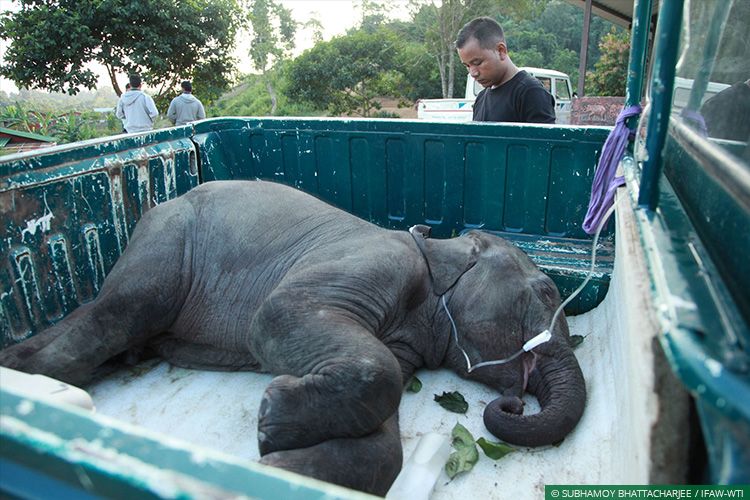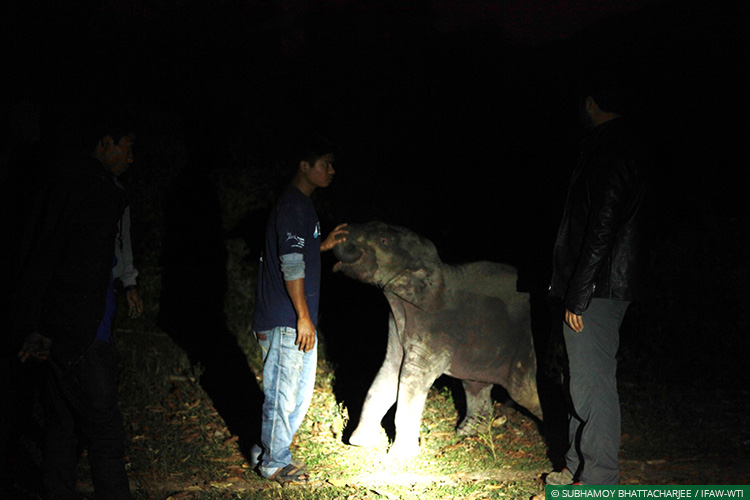
CWRC, Assam, December 3, 2017: A male elephant calf, about four months old, has been admitted to CWRC (the Centre for Wildlife Rehabilitation and Conservation, IFAW-WTI and the Assam Forest Department’s wildlife rescue, treatment and rehabilitation facility near Kaziranga National Park) following an unsuccessful attempt at reuniting it with its natal herd in the Karbi Anglong district last week.
“The calf was separated from its herd on November 28 while crossing a river near Arong Pira village in Koliamati”, said Dr Santosh Kr Gupta, veterinarian with the Karbi Anglong Mobile Veterinary Service (MVS) unit established by WTI and the Japan Tiger and Elephant Fund (JTEF), with support from the Karbi Anglong Autonomous Council (KAAC) and the Assam Forest Department. “A forest department team searched for the natal herd along with local villagers, but it could not be located on the day.”
Dr Gupta and the relevant forest authorities decided to shift the calf to CWRC for its betterment. It was kept at the centre’s Large Animal Nursery for overnight observation. The next day, as news came in that the herd had been sighted, and since the calf seemed to be in good health, it was decided that a reunion could be attempted.

A combined team comprising Dr Panjit Basumatary, the lead veterinarian at CWRC, Dr Debabrata Phukan, Forest Veterinary Officer at Kaziranga, Dilip Deori, Project Manager of WTI’s Kaziranga – Karbi Anglong Link Project, and Dr Gupta proceeded to the location where the herd had been sighted. The calf was placed in the elephant corridor at the site in the hope that its mother or natal herd would respond. However, after waiting for a few hours, as darkness fell, the team realised that a successful reunion would not be possible.
The team returned to CWRC and admitted the calf to the Large Animal Nursery. “It looks healthy, although it is naturally stressed and dehydrated, having been separated from its mother and natal herd”, said Dr Basumatary after it had been under observation for 48 hours. “It will now be hand-raised under our care with the long-term goal of wild rehabilitation.”
The calf has been introduced to another elephant calf to reduce its stress levels. It is being exposed to sunlight in an outdoor paddock attached to the nursery and is gradually responding to milk formula and forage.
